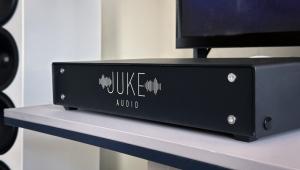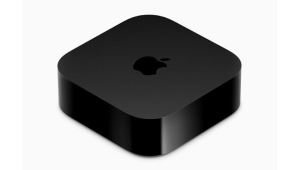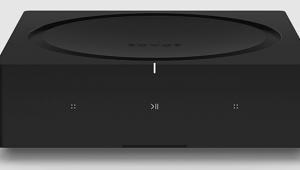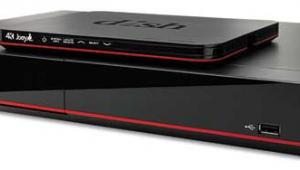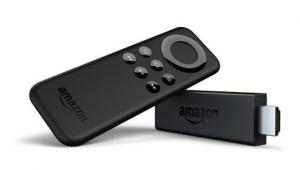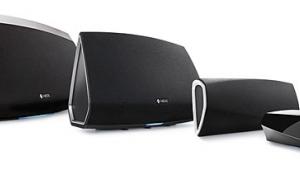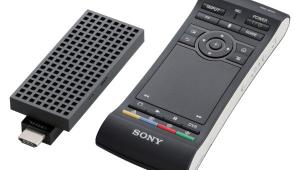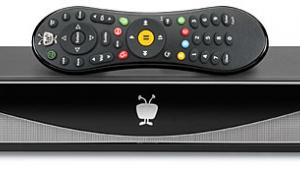Well done Darryl for showcasing such a detailed information about HEOS multi room system here. I am sure it will help many people like me to select best wireless multi room music system. The way you explained HEOS app functionality is really amazing and you have written every single bit of information fruitful for users. I think you have given them much time to understand the complete HEOS system because the information written here is much more than of HEOS by Denon website http://usa.denon.com/us/heos
Denon HEOS Wireless Multiroom Sound System Page 2
At present, Denon doesn’t offer any sort of desktop client for system control. Controllers for both PC and Mac are said to be under development.
Setup Time Is Shorter Than This Paragraph
About the only way that Denon could make setting up the system any easier is if they sent a white-gloved, tuxedo-clad technician to unbox the gear and plug it in for you. Connecting a HEOS component to your Wi-Fi network is ridiculously easy and involves plugging one end of the included 3.5mm cable into the headphone jack of your smart device and the other end into the Aux input on the HEOS speaker or amp. After a couple of taps on your phone’s or tablet’s screen, all of the Wi-Fi network’s setup parameters are transferred, and the HEOS component is ready to go. Adding a speaker system using Ethernet requires plugging in the Ethernet cable—and that’s about it.
Hearing the HEOS
The smallest of the speaker systems, the HEOS 3, differs from the other two in more than just size, with the most important distinction being that two HEOS 3s can be configured to work as a stereo pair. Denon claims to have exceptional synchronization among its speakers, which they point out could benefit stereo imaging. The HEOS 3 is also designed to be used horizontally or vertically. Since the orientation has a big effect on the sound, there’s a setting in the HEOS app to select the proper equalization curve for horizontal or vertical operation. Another feature exclusive to the HEOS 3 is a threaded insert on the back for use with a wall-mount bracket or speaker stand. Two full-range drivers and a two-channel Class D amp live inside the cabinet, and there’s a large downward-sloping port on the back.

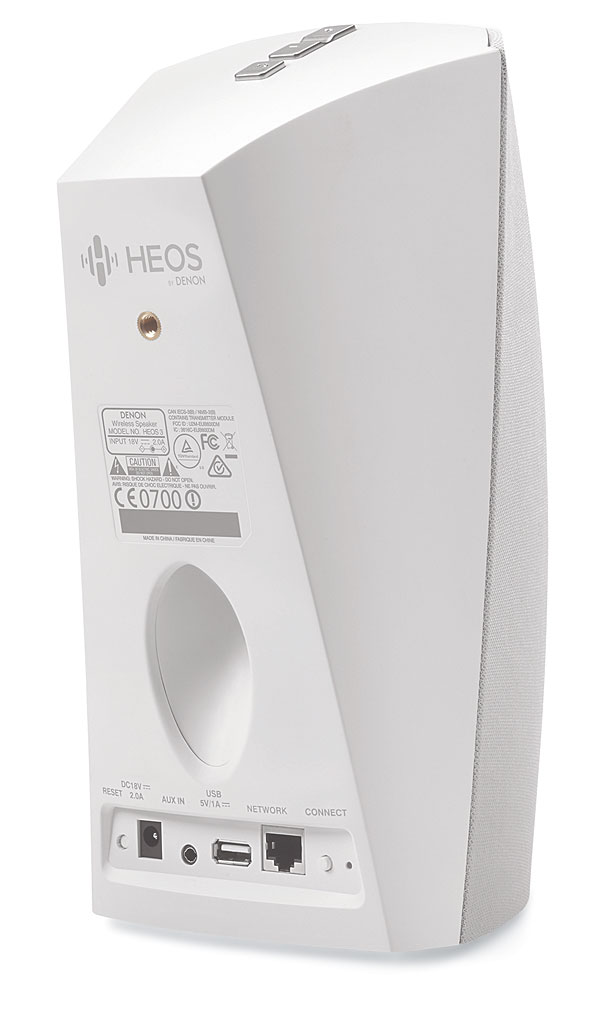
The HEOS 3 puts out a surprising amount of bass, regardless of its orientation. There’s a lot of output from the rear-firing port. When oriented vertically, the HEOS 3 has a somewhat small and narrow soundstage, but there’s no doubt it was quite good for a $300 stereo speaker system. The speaker broke out from quite good to really excellent when placed horizontally. With the correct EQ setting, the horizontal HEOS 3 blossomed with a much wider, bigger soundfield. During the beginning of Gwyneth Herbert’s “So Worn Out” (Ten Lives), the placement of instruments was slightly muddled—but Ms. Herbert’s voice was clean and clear. One of the notes I made while listening to “I Love the Life I Live” from the Kenny Wayne Shepherd Band’s excellent Goin’ Home was how balanced the vocals were without being placed too forward or too far back. The overall sound of the HEOS 3 was big—much bigger than what you’d expect from such a diminutive speaker.


The HEOS 5 includes four active drivers (two tweeters with two woofers) plus a passive radiator. The middle model of the three HEOS speakers ups the power ante over the HEOS 3 by using four dedicated Class D amps. It’s a compact speaker, weighing only 6.6 pounds, and it has a convenient, built-in hidden handle on the back near the apex of the sloping front and rear sides. I was immediately struck by the deeper bass extension and more natural character of the HEOS 5, along with the system’s smoother-sounding overall response. Besides the more convincing bass, there was an added throaty, visceral impact to the vocals on the Shepherd track. I expected the soundstage to be wider than the HEOS 3’s, and it was noticeably so with the John Butler Trio’s “Funky Tonight” (Grand National). The guitar strings also had more life and snap. As with the smaller HEOS speaker, placing the HEOS 5 too close to a wall might overemphasize the bass. Each HEOS component has individual bass and treble adjustments, so you can work with the settings to help make amends for placement issues.

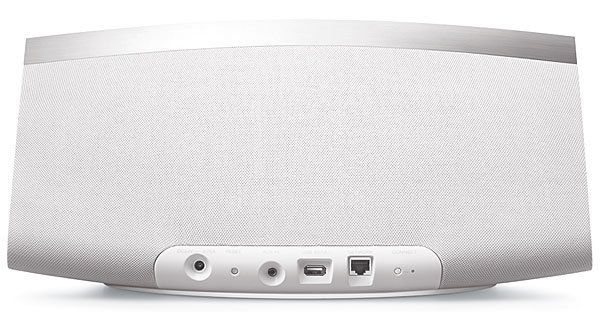
The big-daddy speaker, the HEOS 7, is long and low, with the same inward-sloping front and back styling of the HEOS 5 but without a built-in handle. There’s something about the proportions and cosmetics of the HEOS 7 that screams “performance” at the top of its lungs, even before you hear the five active drivers (two tweeters, two mids, one woofer) and two passive radiators. The HEOS 7 is powerful, with a tremendous soundstage. In fact, there’s little about this speaker to find fault in. On the Herbert track, I noticed a slight hot spot when I sat dead center in front of the speaker, but it was minor, and I found it acceptable in the context of the width and liveliness of the wall of sound created by the HEOS 7 in my 12 x 24-foot room. Interestingly, the HEOS 7 is the only model that includes a headphone output.
The HEOS Amp and HEOS Link are basically cut from the same cloth but use slightly different patterns. Both models include analog stereo and optical digital audio inputs and subwoofer outputs. The Link adds both optical and coaxial digital audio outputs, as well as a 12-volt trigger output and an IR emitter output. Being approximately 9 and 6 inches wide (respectively), neither the Amp nor the Link is a full-size, stackable component. In the case of the Amp and its stout 100 watts x 2 amplifier, stackability isn’t likely to be an issue. The preamp-only Link, on the other hand, will need to go on a shelf of its own in your A/V rack if you’re incorporating it into a bigger system.
Without a doubt, I was amazed at the testicular fortitude of the HEOS Amp and its refusal to give up no matter how hard I drove it with several speakers. What impressed me most about this little-amp-that-can was how well it performed when driving a pair of large Legacy Harmony in-walls. Not only was the sound warm and alive with dynamic presence, but the bass output was strong enough that I never felt the need to use the HEOS Amp’s subwoofer preamp output. As for the HEOS Link, when I hooked it up as a streaming audio source to an Anthem AVM 50v processor and an Anthem MCA 50 amplifier, it performed impeccably.
Conclusion
Denon’s HEOS system is simply terrific and terrifically simple. As big a fan I am of everything that Sonos has done over the years, I can honestly say that HEOS is the first system in toto that can stand tall next to the Goliathan Sonos and be considered a worthy contender. HEOS has a long way to go in terms of adding streaming services, and only time will tell if HEOS can match Sonos when it comes to amazing customer service. But for the money, each HEOS component is a spectacular achievement in the multiroom, streaming audio realm. I’m not saying everyone should ditch their Sonos systems and buy a bunch of HEOS gear. The important thing here is that if you’re looking for a streaming system with refined cosmetics, an extensive set of inputs, and superb sound, you should give HEOS serious consideration. Sonos is still the king, but HEOS is making a shiny crown of its own.
- Log in or register to post comments


How do you control rooms when using Spotify Connect? Do you have to jump back to the Heos app if you want to add or drop rooms? This is why Sonos will rule for a long time, everything can be done within the app.


